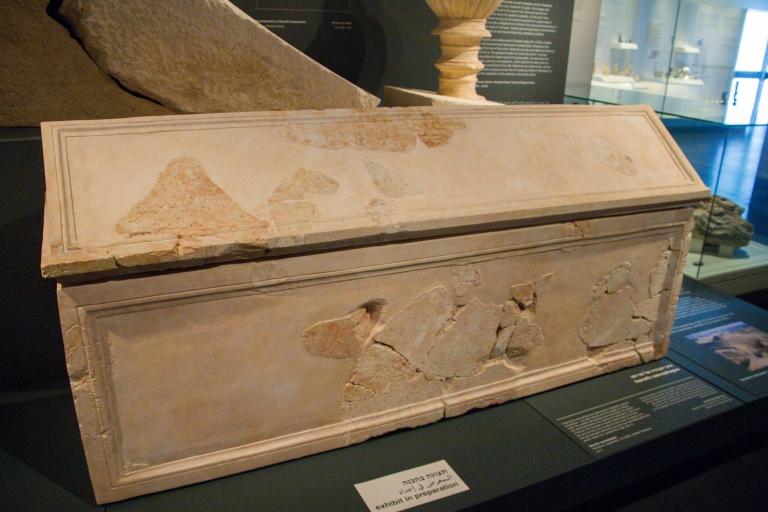
While I was in Israel, on our last day there, we went to the Israel Museum in Jerusalem. We didn’t have a lot of time to spend there and I definitely want to go back because there was so much to see there that we just weren’t able to explore. But what we did see was incredible!
Take the image today for example. Do you remember the story of the Nativity? There as a family of kings in Israel, the “Herod’s”. Herod the Great was a phenomenal builder, but a horrible king – even killing members of his own family because of his paranoia.
If you recall the stories from the gospels, Jesus appeared before Herod as he was on trial for his life. There were enough Herod’s mentioned in the New Testament that it’s fairly easy to get confused, but when I saw this artifact, I was mesmerized.
This stone sarcophagus is the sarcophagus of King Herod from the NT! I couldn’t believe that I was standing right next to it. It served as a reminder to me that all of us will wind up in a similar container some day – whether we are princes or paupers. I would just like to do all that I can to be sure that I won’t be remembered for horrible acts such as Herod was notorious for, but rather for having made a positive difference in the world. That should be the goal for us all!
ON THIS DAY IN HISTORY: in 1914, advancing German forces bombarded the Belgian city of Antwerp, as Belgian troops and their British allies struggle to resist the onslaught.
After the mighty fortress city of Liege fell to the Germans in the opening weeks of World War I, King Albert I ordered the Belgian army’s remaining 65,000 troops in the region to retreat to the city of Antwerp, protected by a ring of 48 inner and outer forts and some 80,000 garrison troops. From Antwerp, Belgian forces conducted sorties in August and September 1914 designed to distract the German 1st Army, led by General Alexander von Kluck, from its attacks against the British and French over the French frontier. After von Kluck was forced to send four divisions to repel an attack from Antwerp on September 9, German Chief of Staff Helmuth von Moltke decided to send his men against Antwerp with the goal of capturing the city.
On September 28, five German divisions began bombing the outer ring of forts at Antwerp’s southeastern corner. Heavy artillery such as the famous Big Bertha—a 420-mm siege howitzer gun—made an immediate impact, arousing the concern of the British War Office, which determined to redeploy troops originally intended for the British Expeditionary Force (BEF) in France to Antwerp. After the Germans succeeded in penetrating two of the city’s forts on October 2, the British sent Winston Churchill, first lord of the Admiralty, to personally assess the situation. Churchill telegraphed his observations to Minister of War Lord H.H. Kitchener on October 4, stating that the Belgian troops were “weary and disheartened” and that the city’s ground was so waterlogged that it was impossible for the Belgians to dig trenches for its protection.
By October 5, some 8,000 troops of the British Royal Naval Division had arrived in Antwerp, transported from the port city of Ostend in London city buses commandeered for the war effort. The following day, a larger British force of 22,000 reached Ostend; after the French decided not to send any troops, however, the British command hesitated in sending their own force ahead. They hesitated too long: Though the British soldiers who did reach Antwerp were greeted with jubilant cries of “Vive les Anglais!” they were unable to withstand the German onslaught, which began with a fierce bombardment on the evening of October 7.
That same day, the Belgian government—relocated to Antwerp from Brussels after that city’s fall—moved again, this time to Ostend. On October 8, Antwerp was evacuated; its military governor, General Victor Deguise, formally surrendered to the Germans on October 10. German forces would occupy Antwerp for the duration of the war; it was finally liberated in late 1918.
TRIVIA FOR TODAY: There were over 35 million civilian and soldier casualties in WWI. Over 15 million died and 20 million were wounded.